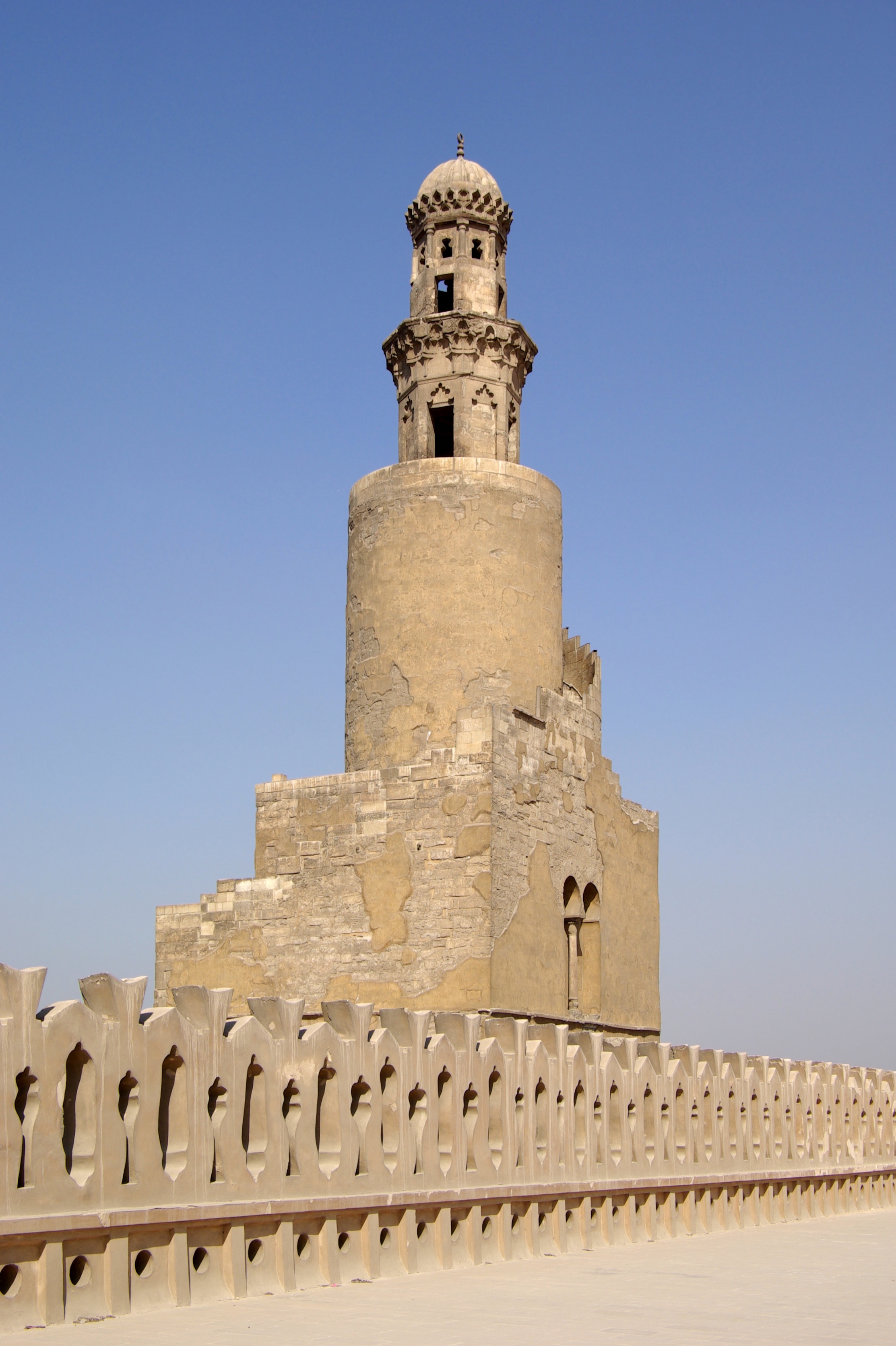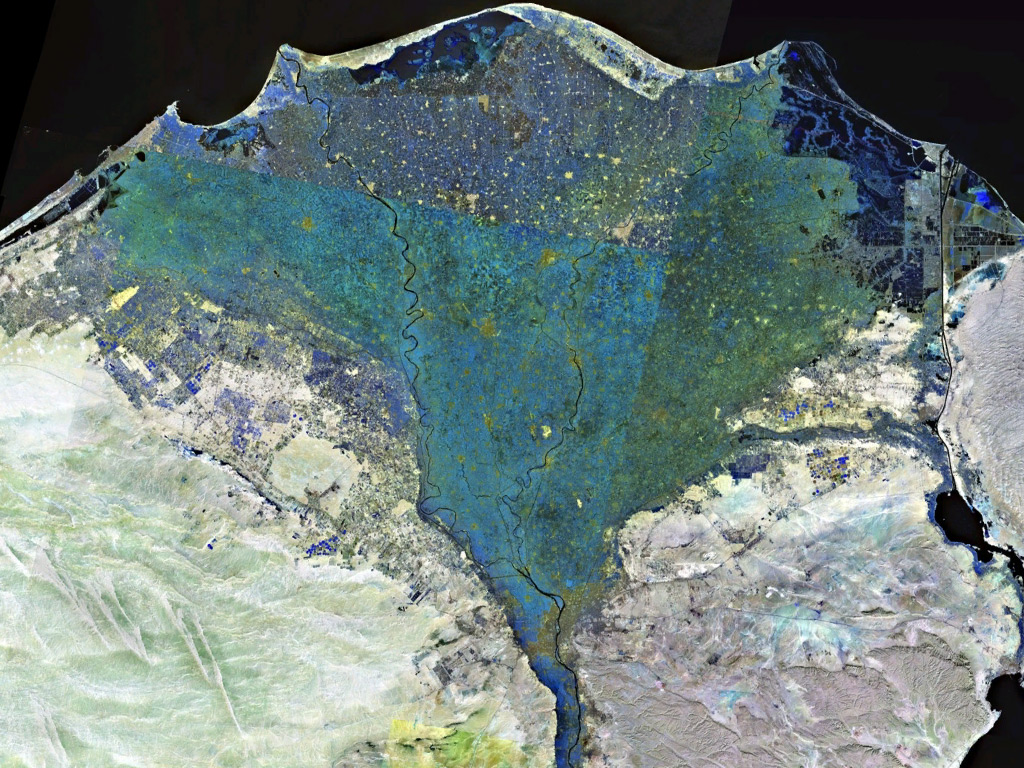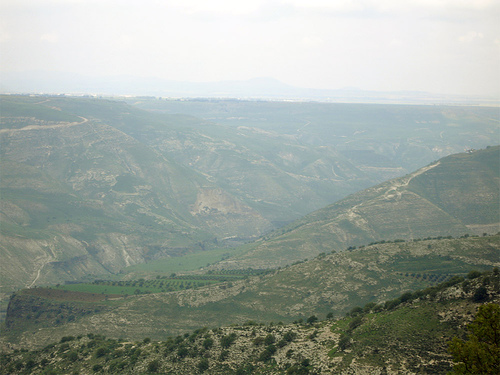|
Medieval Egypt
Following the Islamic conquest in 639, Lower Egypt was ruled at first by governors acting in the name of the Rashidun Caliphs and then the Umayyad Caliphs in Damascus, but in 747 the Umayyads were overthrown. Throughout Islamic rule, Askar was named the capital and housed the ruling administration. The conquest led to two separate provinces all under one ruler: Upper and Lower Egypt. These two very distinct regions were governed by the military and followed the demands handed down by the governor of Egypt and imposed by the heads of their communities. Egypt was ruled by many dynasties from the start of Islamic control in 639 until the early 16th century. The Umayyad period lasted from 658 to 750. The Abbasid period which came after was much more focused on taxes and centralizing power. In 868, the Tulunids, ruled by Ahmad ibn Tulun, expanded Egypt's territory into the Levant. He would rule until his death in 884. After years of turmoil under Ahmad ibn Tulun's successor, many c ... [...More Info...] [...Related Items...] OR: [Wikipedia] [Google] [Baidu] |
Muslim Conquest Of Egypt
The Muslim conquest of Egypt, led by the army of 'Amr ibn al-'As, took place between 639 and 646 AD and was overseen by the Rashidun Caliphate. It ended the seven-century-long period of Roman reign over Egypt that began in 30 BC. Byzantine rule in the country had been shaken, as Egypt had been conquered and occupied for a decade by the Sasanian Empire in 618–629, before being recovered by the Byzantine emperor Heraclius. The caliphate took advantage of Byzantines' exhaustion and captured Egypt ten years after its reconquest by Heraclius. During the mid-630s, the Romans had already lost the Levant and its Ghassanid allies in Arabia to the Caliphate. The loss of the prosperous province of Egypt and the defeat of the Byzantine armies severely weakened the empire, resulting in further territorial losses in the centuries to come. Background With the death of Muhammad in 632 AD, the Muslim world began a period of rapid expansion. Under the rule of the first caliphs, the Rash ... [...More Info...] [...Related Items...] OR: [Wikipedia] [Google] [Baidu] |
Mamluk
Mamluk ( ar, مملوك, mamlūk (singular), , ''mamālīk'' (plural), translated as "one who is owned", meaning "slave", also transliterated as ''Mameluke'', ''mamluq'', ''mamluke'', ''mameluk'', ''mameluke'', ''mamaluke'', or ''marmeluke'') is a term most commonly referring to non-Arab, ethnically diverse (mostly Southern Russian, Turkic, Caucasian, Eastern and Southeastern European) slave-soldiers and freed slaves who were assigned military and administrative duties, serving the ruling Arab dynasties in the Muslim world. The most enduring Mamluk realm was the knightly military class in Egypt in the Middle Ages, which developed from the ranks of slave-soldiers. Originally the Mamluks were slaves of Turkic origin from the Eurasian Steppe, but the institution of military slavery spread to include Circassians, Abkhazians, Georgians,"Relations of the Georgian Mamluks of Egypt with Their Homeland in the Last Decades of the Eighteenth Century". Daniel Crecelius and Gotch ... [...More Info...] [...Related Items...] OR: [Wikipedia] [Google] [Baidu] |
Nile Delta
The Nile Delta ( ar, دلتا النيل, or simply , is the delta formed in Lower Egypt where the Nile River spreads out and drains into the Mediterranean Sea. It is one of the world's largest river deltas—from Alexandria in the west to Port Said in the east, it covers of Mediterranean coastline and is a rich agricultural region. From north to south the delta is approximately in length. The Delta begins slightly down-river from Cairo. Geography From north to south, the delta is approximately in length. From west to east, it covers some of coastline. The delta is sometimes divided into sections, with the Nile dividing into two main distributaries, the Damietta and the Rosetta, flowing into the Mediterranean at port cities with the same name. In the past, the delta had several distributaries, but these have been lost due to flood control, silting and changing relief. One such defunct distributary is Wadi Tumilat. The Suez Canal is east of the delta and enters ... [...More Info...] [...Related Items...] OR: [Wikipedia] [Google] [Baidu] |
Helwan
Helwan ( ar, حلوان ', , cop, ϩⲁⲗⲟⲩⲁⲛ, Halouan) is a city in Egypt and part of Greater Cairo, on the bank of the Nile, opposite the ruins of Memphis. Originally a southern suburb of Cairo, it served as the capital of the now defunct Helwan Governorate from April 2008 to April 2011, after which it was re-incorporated into the Cairo Governorate. The ''kism'' of Helwan had a population of 643,327 in the 2006 census.Central Agency for Public Mobilisation and Statistics, Population and Housing Census 2006, Population distribution by sex, gov: Cairo Retrieved on 2008-04-01. History The Helwan and Isnian cultures of the late[...More Info...] [...Related Items...] OR: [Wikipedia] [Google] [Baidu] |
Fustat
Fusṭāṭ ( ar, الفُسطاط ''al-Fusṭāṭ''), also Al-Fusṭāṭ and Fosṭāṭ, was the first capital of Egypt under Muslim rule, and the historical centre of modern Cairo. It was built adjacent to what is now known as Old Cairo by the Rashidun Muslim general 'Amr ibn al-'As immediately after the Muslim conquest of Egypt in AD 641, and featured the Mosque of Amr, the first mosque built in Egypt. The city reached its peak in the 12th century, with a population of approximately 200,000.Williams, p. 37 It was the centre of administrative power in Egypt, until it was ordered burnt in 1168 by its own vizier, Shawar, to keep its wealth out of the hands of the invading Crusaders. The remains of the city were eventually absorbed by nearby Cairo, which had been built to the north of Fustat in 969 when the Fatimids conquered the region and created a new city as a royal enclosure for the Caliph. The area fell into disrepair for hundreds of years and was used as a rubbish d ... [...More Info...] [...Related Items...] OR: [Wikipedia] [Google] [Baidu] |
Babylon (fortress)
Babylon Fortress (; ) is an Ancient Roman fortress, built around 30 BC with the arrival of emperor Augustus in Egypt, on the eastern bank of the Nile Delta, located in the area known today as Coptic Cairo. It is situated in the former area of the Heliopolite Nome, upon the east bank of the Nile, at latitude 30°N, near the commencement of the Pharaonic Canal (also called Ptolemy's Canal and Trajan's Canal), from the Nile to the Red Sea. It was at the boundary between Lower and Middle Egypt, where the river craft paid tolls when ascending or descending the Nile. Diodorus ascribes the erection of the first fort to rebel Assyrian captives in the reign of Sesostris, and Ctesias dates it to the time of Semiramis; but Josephus, with greater probability, attributes its structure to some Babylonian followers of Cambyses, in 525 BC. The Romans built a new fortress nearer the river, with typically Roman red and white banded masonry. Within the fortress's enclosure are the Coptic Muse ... [...More Info...] [...Related Items...] OR: [Wikipedia] [Google] [Baidu] |
Constans II (Byzantine Empire)
Constans II ( grc-gre, Κώνστας, Kōnstas; 7 November 630 – 15 July 668), nicknamed "the Bearded" ( la, Pogonatus; grc-gre, ὁ Πωγωνᾶτος, ho Pōgōnãtos), was the Eastern Roman emperor from 641 to 668. Constans was the last attested emperor to serve as consul, in 642, although the office continued to exist until the reign of Leo VI the Wise (r. 886–912). His religious policy saw him steering a middle line in disputes between the Orthodoxy and Monothelitism by refusing to persecute either and prohibited discussion of the natures of Jesus Christ under the Type of Constans in 648. His reign coincided with Muslim invasions under Mu'awiya I in the late 640s to 650s. Constans was the first Roman emperor to visit Rome since the fall of the Western Roman Empire in 476, and the last emperor to visit Rome while it was still held by the Empire. Origins and early career Constans was born on 7 November 630 in Constantinople, the East-Roman capital. His father Constant ... [...More Info...] [...Related Items...] OR: [Wikipedia] [Google] [Baidu] |
Alexandria
Alexandria ( or ; ar, ٱلْإِسْكَنْدَرِيَّةُ ; grc-gre, Αλεξάνδρεια, Alexándria) is the second largest city in Egypt, and the largest city on the Mediterranean coast. Founded in by Alexander the Great, Alexandria grew rapidly and became a major centre of Hellenic civilisation, eventually replacing Memphis, in present-day Greater Cairo, as Egypt's capital. During the Hellenistic period, it was home to the Lighthouse of Alexandria, which ranked among the Seven Wonders of the Ancient World, as well as the storied Library of Alexandria. Today, the library is reincarnated in the disc-shaped, ultramodern Bibliotheca Alexandrina. Its 15th-century seafront Qaitbay Citadel is now a museum. Called the "Bride of the Mediterranean" by locals, Alexandria is a popular tourist destination and an important industrial centre due to its natural gas and oil pipelines from Suez. The city extends about along the northern coast of Egypt, and is the large ... [...More Info...] [...Related Items...] OR: [Wikipedia] [Google] [Baidu] |
Heliopolis (Ancient Egypt)
Heliopolis (I͗wnw, Iunu or 𓉺𓏌𓊖; egy, I͗wnw, 'the Pillars'; cop, ⲱⲛ; gr, Ἡλιούπολις, Hēlioúpοlis, City of the Sun) was a major city of ancient Egypt. It was the capital of the 13th or Heliopolite Nome of Lower Egypt and a major religious centre. It is now located in Ayn Shams, a northeastern suburb of Cairo. Heliopolis was one of the oldest cities of ancient Egypt, occupied since the Predynastic Period.. It greatly expanded under the Old and Middle Kingdoms but is today mostly destroyed, its temples and other buildings having been scavenged for the construction of medieval Cairo. Most information about the ancient city comes from surviving records. The major surviving remnant of Heliopolis is the obelisk of the Temple of Ra- Atum erected by Senusret I of Dynasty XII. It still stands in its original position, now within Al-Masalla in Al-Matariyyah, Cairo. The high red granite obelisk weighs 120 tons (240,000 lbs) and is believed to be ... [...More Info...] [...Related Items...] OR: [Wikipedia] [Google] [Baidu] |
Byzantine Empire
The Byzantine Empire, also referred to as the Eastern Roman Empire or Byzantium, was the continuation of the Roman Empire primarily in its eastern provinces during Late Antiquity and the Middle Ages, when its capital city was Constantinople. It survived the fragmentation and fall of the Western Roman Empire in the 5th century AD and continued to exist for an additional thousand years until the fall of Constantinople to the Ottoman Empire in 1453. During most of its existence, the empire remained the most powerful economic, cultural, and military force in Europe. The terms "Byzantine Empire" and "Eastern Roman Empire" were coined after the end of the realm; its citizens continued to refer to their empire as the Roman Empire, and to themselves as Romans—a term which Greeks continued to use for themselves into Ottoman times. Although the Roman state continued and its traditions were maintained, modern historians prefer to differentiate the Byzantine Empire from Ancient ... [...More Info...] [...Related Items...] OR: [Wikipedia] [Google] [Baidu] |
Amr Ibn Al-As
( ar, عمرو بن العاص السهمي; 664) was the Arab commander who led the Muslim conquest of Egypt and served as its governor in 640–646 and 658–664. The son of a wealthy Qurayshite, Amr embraced Islam in and was assigned important roles in the nascent Muslim community by the Islamic prophet Muhammad. The first caliph Abu Bakr () appointed Amr as a commander of the conquest of Syria. He conquered most of Palestine, to which he was appointed governor, and led the Arabs to decisive victories over the Byzantines at the battles of Ajnadayn and Yarmouk in 634 and 636. Amr launched the conquest of Egypt on his own initiative in late 639, defeating the Byzantines in a string of victories ending with the surrender of Alexandria in 641 or 642. It was the swiftest of the early Muslim conquests. This was followed by westward advances by Amr as far as Tripoli in present-day Libya. In a treaty signed with the Byzantine governor Cyrus, Amr guaranteed the security of Egy ... [...More Info...] [...Related Items...] OR: [Wikipedia] [Google] [Baidu] |
Umar Ibn Al-Khattab
ʿUmar ibn al-Khaṭṭāb ( ar, عمر بن الخطاب, also spelled Omar, ) was the second Rashidun caliph, ruling from August 634 until his assassination in 644. He succeeded Abu Bakr () as the second caliph of the Rashidun Caliphate on 23 August 634. Umar was a senior companion and father-in-law of the Islamic prophet Muhammad. He was also an expert Muslim jurist known for his pious and just nature, which earned him the epithet ''al-Fārūq'' ("the one who distinguishes (between right and wrong)"). Umar initially opposed Muhammad, his distant Qurayshite kinsman and later son-in-law. Following his conversion to Islam in 616, he became the first Muslim to openly pray at the Kaaba. Umar participated in almost all battles and expeditions under Muhammad, who bestowed the title ''al-Fārūq'' ('the Distinguisher') upon Umar, for his judgements. After Muhammad's death in June 632, Umar pledged allegiance to Abu Bakr () as the first caliph and served as the closest adv ... [...More Info...] [...Related Items...] OR: [Wikipedia] [Google] [Baidu] |







